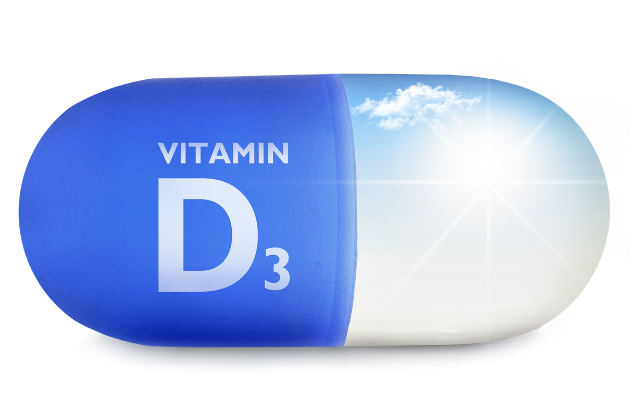
The Best Way to Get Vitamin D During the Winter
Do you ever feel like the cold winter months are dragging on, and there’s nothing to do but stay inside? Well, although it can be tempting to become a hermit during this time of year, don’t forget about one significant factor–making sure you get enough Vitamin D! Vitamin D is essential for bone health and immunity, plus it has been linked to several other mental and physical benefits. While the sun is always our best bet for obtaining Vitamin D naturally, that is only an option for some people in colder climates with shorter days during the winter. But don’t worry! There are plenty of ways to get your recommended daily dose through dietary sources or supplements, even if sunlight is out of reach. Read on to learn more about why vitamin D matters during these chillier months, how much you need daily, and where to obtain those levels indoors and outdoors quickly!
Understanding Vitamin D and its importance
Vitamin D is a fat-soluble vitamin that helps your body absorb calcium, essential for strong bones. Vitamin D also plays a vital role in overall immune system health, helping regulate inflammation and fight unwanted bacteria and viruses. In addition, research has linked high Vitamin D levels with improved mental health and even cancer prevention! Depending upon your age, gender, and other factors, the National Institutes of Health (NIH) recommends a daily dosage ranging from 600 to 1000 international units. 
Food sources that provide Vitamin D
Fortunately, plenty of food sources can help you reach your recommended daily intake of Vitamin D. Foods such as fatty fish (salmon and tuna), eggs, and fortified milk products are all excellent options. You can also get creative in the kitchen by adding mushrooms cooked in sunlight to salads or using orange juice fortified with Vitamin D instead of regular OJ!
How to get more vitamin D from the sun during winter
If the sun is out, it’s still possible to get Vitamin D from sunlight, even during winter. To maximize your exposure, try to go outside when the sun is strongest (usually from 10 am to 2 pm). Try to expose as much skin as possible, but be sure to cover up if you start feeling too chilly–it’s more important to stay warm than it is to get a tan!
FAQs about getting Vitamin D during Winter
Do I need to take Vitamin D every day?
The amount of Vitamin D you need daily will depend on your age, gender, and other factors. The NIH generally recommends 600 to 1,000 international units for most adults.
What if I can’t get enough Vitamin D from food sources?
If you cannot reach the recommended levels from dietary sources alone, consider talking to your doctor about taking a supplement. Vitamin D supplements are generally safe and can ensure you get all its health benefits.
Are there any risks associated with Vitamin D?
While having too little Vitamin D can be a problem, having too much can also be an issue. Since Vitamin D is fat-soluble, excess amounts can accumulate in your body, potentially leading to serious health problems. Talk to your doctor about what’s suitable for you–they will be able to help you determine the dosage that works best for your situation.
Are there any other tips for getting enough Vitamin D during winter?
If you’re still having trouble getting enough Vitamin D from food sources and sunshine alone, regular exercise is one great way to increase your levels. Studies have shown that regular physical activity can help your body absorb more Vitamin D, so try to get outside for a walk or jog (weather permitting!) for an extra boost of the sunshine vitamin during the winter.
What kind of sunscreen is recommended for exposure to sunlight in winter?
When you are heading outside in the wintertime, keep in mind that the sun’s rays can still cause damage to your skin. To prevent this, wearing sunscreen with an SPF of at least 15 is essential, even when temperatures are more relaxed. Look for one labelled “broad spectrum” that protects UVA and UVB. If you swim or sweat, reapply every two hours. Taking these precautions will help you get the Vitamin D benefits of sunlight without putting yourself at risk for sunburn and other skin damage.
Food sources rich in Vitamin D for vegetarians
Obtaining the recommended Vitamin D levels can be trickier for vegetarians as animal-based foods are the best dietary sources. However, plenty of plant-based foods can help you reach your daily intake goals. Fortified non-dairy milks, such as almond or soy milk, are excellent options. Additionally, mushrooms, certain types of seaweed, and fortified breakfast cereals are excellent choices. And remember–with suitable food sources and a few other tricks, you can quickly get your daily dose of Vitamin D even during the coldest months!
Can I take any supplements to get more Vitamin D during winter?
Taking a supplement can be a great way to make up the difference if you’re having trouble reaching the recommended daily dosage of Vitamin D through dietary sources and sun exposure. Talk to your doctor about what’s suitable for you–they will be able to help you determine the dosage that works best for your situation. When selecting a supplement, look for one labelled “Vitamin D3, ” the most bioavailable form. When taken as directed, Vitamin D supplements can help you get all the health benefits it offers without putting you at risk for overdose.
Tips and tricks for getting more Vitamin D in winter
To get the most out of the limited sun exposure in winter, here are a few tips and tricks to keep in mind:
- Take advantage of any sunny days you have! Try to go outside when the sun is strongest (usually from 10 am to 2 pm).
- Get creative with food sources. Look for fortified options such as non-dairy pints of milk, mushrooms cooked in sunlight, and orange juice fortified with Vitamin D.
- Break a sweat! Research has shown that regular physical activity can help your body absorb more Vitamin D.
- Don’t forget the sunscreen! Wear broad-spectrum sunscreen with an SPF of at least 15 when heading outdoors during winter.
- Talk to your doctor about taking a supplement. If you’re still having trouble getting enough Vitamin D, a supplement can be a great way to make up the difference.
By following these tips, you can quickly get your daily dose of Vitamin D, even during the coldest months!
Concluding remarks – why it is essential to focus on getting enough vitamin D during the wintertime
Vitamin D is essential for many aspects of our health, such as supporting bone health and immune system function. Unfortunately, it can be hard to get enough Vitamin D during winter due to reduced sun exposure. However, with a little effort and creativity, it doesn’t have to be complicated! Eating food sources rich in Vitamin D, taking a supplement if needed, and taking advantage of sunny days when they come, you can quickly get your daily dose of this essential nutrient even during the coldest months. So don’t let winter stop you from living your healthiest life–with these tips in mind, you can stay on top of your Vitamin D intake all year round!
Conclusion:
Winter doesn’t have to mean a decrease in Vitamin D levels. With the right tips and tricks, you can ensure your body gets enough of this essential nutrient even during cold weather months. Eating food sources rich in Vitamin D, taking a supplement if needed, wearing sunscreen outdoors, and exercising regularly are great ways to boost your Vitamin D intake. By following these tips, you can quickly get your daily dose of Vitamin D, even during the wintertime!



Average Rating